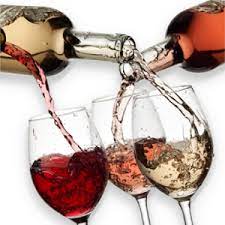Here at CYKP, Life Style is part of the the ethos of what and why we embarked on this journey. As part of the Life Style, one of the initiatives was to "bring like minded people together", and to execute on part of this initiative we are using Wine Tasting.
Here are some detail CYKP Wine Tasting notes which we have put together.
Here we have created a simple forum where you can share your own wine tasting notes: CYKP Wine Tasting sharing
We will encourage the use of the WSET SAT (Systematic Approach to Tasting), either using the Level 2 or Level 3 lexicons.
Appearance:
- Red: Viewing the wine directly down
- Pale - Clearly see the stem of the glass through the liquid
- Medium - Between Pale and Deep
- Deep - Unable to see the stem of the glass through the liquid
- White: Viewing the wine at a 45 degree angle
- Pale - Watery at the rim
- Medium - Between Pale and Deep
- Deep - Pigment reaches almost to the rim
Colour:
- Red: Assess near the rim of the glass due to the “darkness” of the liquid if viewed with depth
- Purple - Blue or Purple
- Ruby - Most common colour
- Garnet - Orange or Brown, but more Red than Brown
- Tawny - More Brown than Red
- Brown - No Red
- White: Assess where there is sufficient liquid at depth as near the rim it will be almost colourless
- Lemon - Most common colour
- Gold - Hint or Orange or Brown
- Amber - Noticeable level of Browning
- Brown - No Orange
Development: The “stage” of the wine
- Youthful - Primary and / or Secondary only
- Developing - Has Tertiary notes
- Fully Developed - > 80% Tertiary
Acidity: Your mouth will produce saliva depending on how acidic the wine is; the more acidic the more saliva you will produce and for how long;
- Low - Little to no saliva
- Med(-) - x seconds
- Med - x seconds
- Med(+) - x seconds
- High - x seconds
Tannins: The “rough” sensation in your mouth;
- Low - No sense or slight sense on tongue
- Med(-) - Some sense on tongue
- Med - Tongue + cheek + teeth
- Med(+) - Tongue + cheek + teeth + start on gum
- High - Tonge + cheek + teeth + gum
Alcohol: The feeling of “warmth” and how far the “warmth” travels after taking a sip of the wine; the warmer and further it goes, such as the “warm” feeling to your stomach will be “high” alcohol
Body: Comparison of the viscous of the wine with water to “full fat milk” with water been “light body” and “full fat milk” been “full body”
Flavour Intensity: Using the scale of how close you need to smell the aromas of the wine will define the Nose Intensity. The Flavour Intensity is defined as if the palette is the same as the nose (then the Flavour Intensity is the same as the Nose Intensity), however if the palette is “stronger” than the Nose Intensity then the Flavour Intensity will be higher than the Nose Intensity (in this case, for example if the nose intensity was a Med, but the palette was stronger, then the Flavour Intensity will be a Med(+) or even Pronounced), and vice-versa if the palette is lighter than the Nose Intensity.
Finish: How long the flavours linger in your mouth, the primary, secondary and tertiary flavours; not the “warm” feeling from the alcohol. For example how long can you still “taste” the fruits or dried fruits (tertiary) flavours after taking the sip of wine.
- Short: 1-2 seconds
- Med(-): 3-5 seconds
- Med: 10 seconds
- Med(+): > 15 seconds
- Long: > 20 seconds
Quality: Using BLIC, move down one ranking for each category the wine does NOT meet (with full marks, such as Intensity is pronounced). That is from Outstanding (meets all BLIC), Very Good (one BLIC not met), Good (two BLIC not met), Acceptable (three BLIC not met), Poor (does not have one BLIC). Note a Med(+) is counted as 1/2 point, such as if both Length and Intensity are Med(+) then the wine has just lost one ranking.
- B - Balance
- L - Length
- I - Intensity
- C - Complexity
In general, the following are the key factors affecting wine:
| Natural Factors | Human Factors |
| - Grape | - Grape Growing |
| - Climate | - Wine Making |
| - Weather | - Maturation |
| - Soil | - Market Force |
